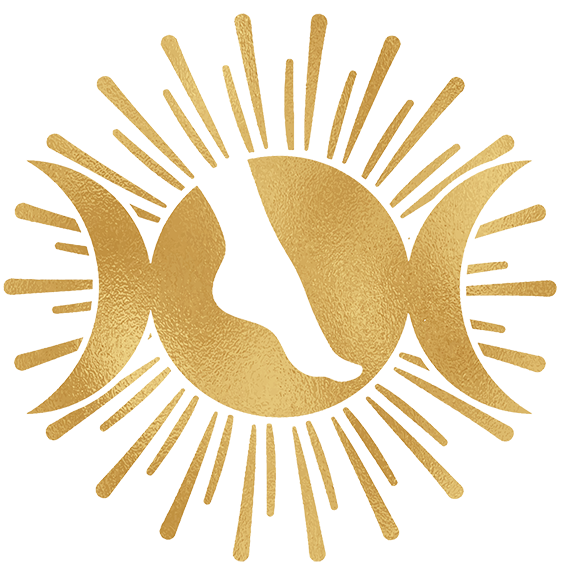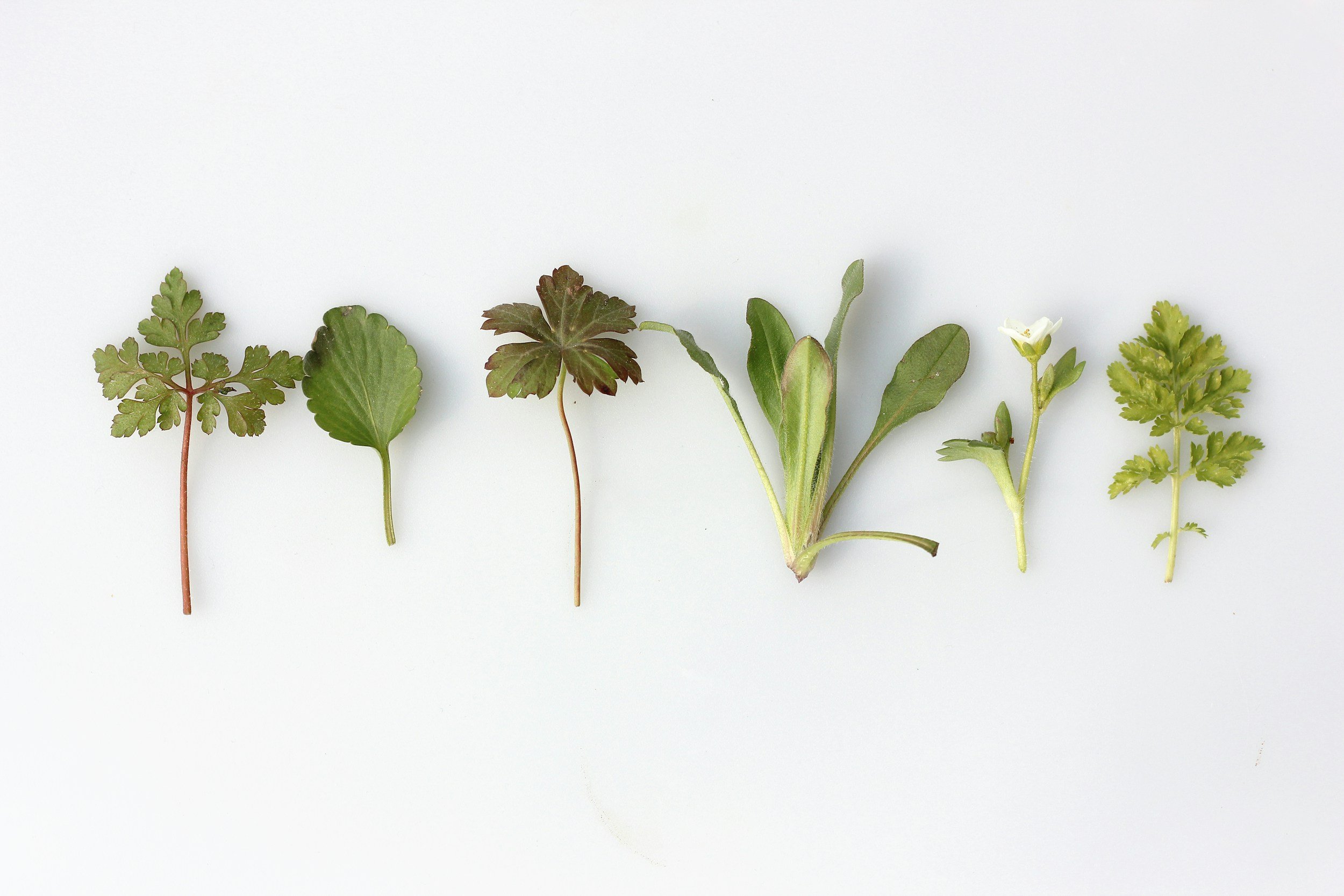The Menopause Transition - Part 2
Archetypes of Womanhood:
Maiden, Mother, Maga, Crone
These ancient archetypes help us reframe menopause as a powerful initiation, not a decline. Across cultures and time, women have honoured life in cyclical phases — not just biologically, but emotionally and spiritually. These archetypes also mirror the energetic patterns many women experience in sync with the lunar cycle.
👧 Maiden (Menarche to ~20s)
The Maiden is the beginning of the feminine journey. This is the time of becoming — full of curiosity, creativity, and self-discovery. It’s when a girl first begins to bleed, and her hormonal system comes online with the rise of oestrogen.
The Maiden is associated with the New Moon and the Spring season of life — fresh, fertile, full of potential. Her energy is external and expansive.
Themes: Initiation, innocence, freedom, first loves, identity, independence.
Hormonal Signature: Rapid hormonal shifts as the body begins to regulate oestrogen and develop ovulatory cycles.
🤱 Mother (20s to early 40s)
The Mother is not defined solely by giving birth — she is the creator, the nurturer, the one who holds space, ideas, people, projects, and homes. This archetype encompasses the full flowering of the menstrual cycle, with ovulation at the centre.
This is the summer of life, aligned with the Full Moon. The Mother gives, produces, and holds. She is often the one society praises most — productive, giving, and fertile.
Themes: Responsibility, service, fertility (literal or metaphorical), ripeness, devotion.
Hormonal Signature: Balanced cycles of oestrogen and progesterone. Ovulation, regular menstruation, libido, vitality.
🧙 Maga (The Forgotten Phase — typically 40s to early 50s)
The Maga is a powerful and too-often erased stage. She is the bridge between the Mother and the Crone. This is often the phase when perimenopause begins — hormonal shifts disrupt patterns, inner truths rise to the surface, and the call to shed false identities grows stronger.
Maga is derived from ancient matriarchal roots — related to "magus" or "magician." She is the alchemist, the visionary, and the disrupter. Her power lies in transformation and clarity. It is a time of profound reckoning and potential liberation.
She is often the woman who says "no more" — no more performing, no more pleasing, no more shrinking.
Themes: Shedding, truth-speaking, boundary-setting, creativity reborn, spiritual housecleaning.
Hormonal Signature: Fluctuating oestrogen, declining progesterone, adrenal support becomes key. Heightened emotional sensitivity.
Aligned with: The Waning Moon and the Autumn phase — preparation for descent.
👵 Crone (Post-Menopause)
The Crone is the wise woman, the seer, the one who no longer bleeds, but who bleeds wisdom. No longer bound to monthly cycles, her rhythm is internal, attuned to intuition and insight.
Historically, the Crone was honoured as the medicine woman, healer, elder, and guide. Modern society has tried to erase or ridicule her — yet this is perhaps the most powerful phase of all.
Cronehood is a time to speak truth without apology, to live freely and fully.
Themes: Liberation, sovereignty, intuition, depth, eldership, completion.
Hormonal Signature: Low ovarian hormones; body now depends on adrenal, fat tissue, and nervous system health to regulate balance. Clarity often increases.
Aligned with: The Dark Moon and the Winter phase — stillness, reflection, deep knowing
Menstrual Cycles, the Moon & the Feminine Rhythm
Our menstrual cycles are not random — they are deeply connected to the rhythms of the Earth and cosmos. A typical cycle is around 28–29 days, just like the moon.
Moon Phases & Menstrual Phases
New Moon ↔ Menstruation (Inner Winter): Time to rest, reflect, shed
Waxing Moon ↔ Follicular (Inner Spring): Energy builds, clarity returns
Full Moon ↔ Ovulation (Inner Summer): Radiance, outward energy, fertility
Waning Moon ↔ Luteal (Inner Autumn): Intuition rises, truth-telling, preparation
In menopause, the external rhythm softens as the inner rhythm becomes more potent. We are no longer beholden to the tides of hormonal cycling — instead, we synchronise with our own deep knowing.
Even after we stop bleeding, we may feel connected to the moon's phases. Many post-menopausal women report renewed intuition, dream wisdom, and clarity at the full or dark moon.
“The moon taught me that I do not have to be whole to be powerful.”
Ways to Reconnect with Lunar Rhythms:
Track your mood or dreams with the moon phases
Meditate or journal at full and new moons
Use moon imagery or lunar altars in your space
Honour the parts of you that cycle inwardly, even without bleeding
Womb Symbolism & Sacred Feminine Power
Throughout history, the womb has been a source of immense power and deep mystery. In many indigenous and ancient cultures, it was seen as a portal — the literal and symbolic space where life, death, and rebirth occurred.
Cultural Reflections
In Ancient Egypt, the womb was associated with the goddess Isis — mother of magic, healing, and rebirth.
In Celtic traditions, Brigid and Cerridwen held the energies of fire, cauldron (womb), and transformation.
In Vedic teachings, the Shakti force resides in the pelvic bowl — creativity, power, life-force.
Honouring the Womb During Transition
Even when we no longer bleed, the womb remains an energetic centre — a place of deep intuition and knowing.
Ways to Honour Your Womb Space:
Place your hands over your lower belly and breathe deeply
Use castor oil packs to connect with sensation and healing
Journal to or from the womb: “What do you want me to know?”
Dance or sway to reconnect to pelvic rhythm
“Your womb is not empty after menopause – it is full of wisdom. It no longer gives life to others, but now gives life to your inner world.”
Reclaiming this symbolism allows us to step out of shame and into reverence. Menopause becomes not a medical event, but a spiritual return to self.
Herbs & Supplements Reference
-
Use: Phyto-oestrogen; supports oestrogen balance
Cautions / Interactions May affect clotting – caution with blood thinners
-
Use: Phyto-oestrogen; helps with hot flushes
Cautions / Interactions Caution with hormone-sensitive cancers
-
Uses: Supports progesterone production
Cautions / Interactions: Avoid in pregnancy; may affect cycle length
-
Uses: Adaptogen; reduces cortisol & anxiety
Cautions / Interactions: May lower blood pressure; caution with sedatives
-
Uses: Adaptogen; enhances energy & stress resilience
Cautions / Interactions: Stimulating – avoid close to bedtime
-
Uses: Supports progesterone, sleep, relaxation
Cautions / Interactions: Can cause loose stools at high doses
-
Uses: Supports progesterone synthesis and mood
Cautions / Interactions: High doses over time may cause nerve issues
-
Uses: Supports testosterone, thyroid, immune system
Cautions / Interactions: Excess zinc can cause copper deficiency
-
Uses: Helps reduce hot flushes & night sweats
Cautions / Interactions: Not for long-term use in high doses
-
Uses: Liver support; assists hormone detoxification
Cautions / Interactions: May interact with diuretics and lithium



